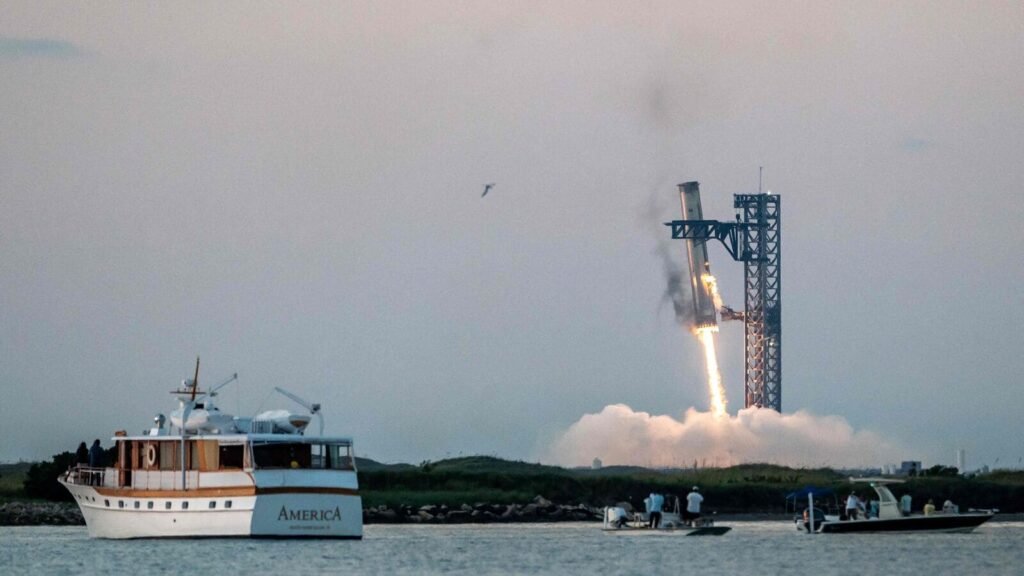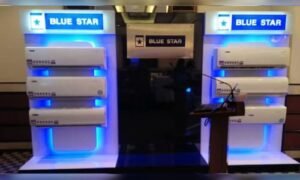Mint Primer: Elon Musk wows the world with mid-air space circus. So what?

Elon Musk’s SpaceX used mechanical ‘chopsticks’ to grab Starship’s huge booster, known as Super Heavy, mid-air after separation from the rocket. This novel approach improves the booster’s reusability by avoiding ocean landings and reducing costs and turnaround time. We explore how it will also increase the efficiency of missions to the Moon and Mars and open the doors for interplanetary travel.
Why are we fussing over this feat?
SpaceX’s Crew Dragon trumped over Boeing’s Starliner in September by becoming the new space vehicle to ferry stranded Nasa astronauts Sunita Williams and Butch Wilmore back to Earth in 2026. On 13 October, during its fifth test flight, SpaceX’s Starship scored another brownie over its rivals by using a giant mechanical contraption with two arms to grab Super Heavy mid-air.
Anand Mahindra, chairman of the Mahindra Group, posted on X: “…I’m happy to be a couch potato if it means that I get to watch history being made. This experiment may just be the critical moment when space travel was democratized and made routine…”
How do these mechanical chopsticks work?
Attached to SpaceX’s launch tower, Mechazilla, these so-called chopstick arms can grab and secure the rocket booster as it returns to the launch pad after separating from Starship, which comprises a spacecraft and the Super Heavy rocket. During recovery, the booster returns to the launch site, descending with grid fins to control its orientation. As the booster falls, the arms align vertically along the tower, controlled with precision motors and actuators, and grab the booster from either side. The system eliminates the need for ocean landings, preventing corrosion and reducing refurbishment time.
What does it mean for future space missions?
The new chopstick approach is aimed at improving the reusability of the booster by avoiding ocean landings, reducing turnaround time and lowering costs. Musk envisions it could allow the booster to be ready for relaunch within 30 minutes, closer to routine, airline-style operations.
But how unique is this approach?
Rival Rocket Lab uses helicopters to catch boosters mid-descent with parachutes, but the system is still being tested. Jeff Bezos-owned Blue Origin’s New Shepard lands vertically, using its engines to slow descent. United Launch Alliance (ULA), a joint venture between Boeing and Lockheed Martin, focuses on recovering key engine components rather than entire boosters.
The National Aeronautics and Space Administration (Nasa) employs parachute-based recovery while also exploring technologies like hypersonic inflatable aerodynamic decelerators (HIAD). The Indian Space Research Organisation (Isro) has a reusable launch vehicle technology demonstrator (RLV-TD), aimed at developing technologies for a fully reusable launch vehicle. But no company has performed a SpaceX-like mid-air capture of a full rocket booster with mechanical arms.
How will it boost Musk’s fortunes?
The success of SpaceX’s mid-air booster recovery with Mechazilla could significantly boost Musk’s financial and strategic position. By drastically reducing launch costs and accelerating turnaround times, SpaceX solidifies its position as a leader in the space industry. Faster reuse of rockets can attract more commercial and government contracts, enhancing revenue streams. Moreover, it strengthens SpaceX’s credibility for ambitious projects like the Starship missions to Mars, which are central to Musk’s long-term vision. This technological edge also differentiates SpaceX from competitors, increasing investor confidence in Musk’s ventures and potentially enhancing the value of his broader portfolio, including Tesla Inc. and Neuralink Corp.
For more such explainers, read Primer.







